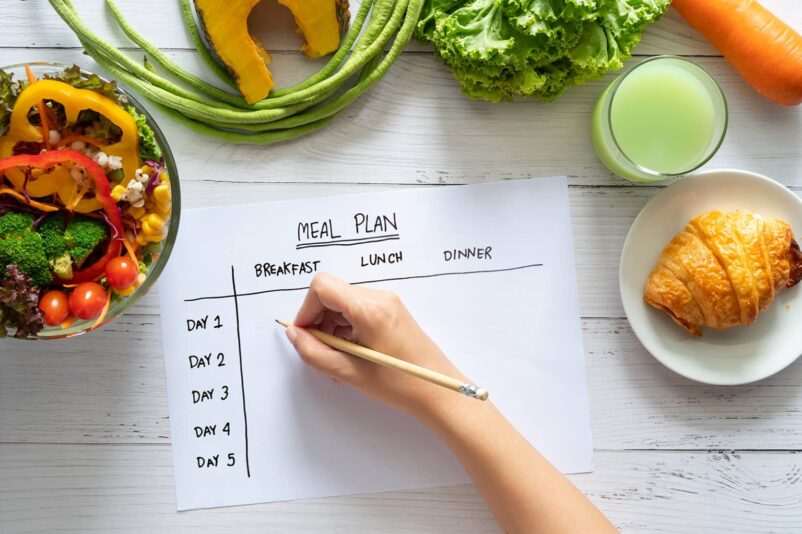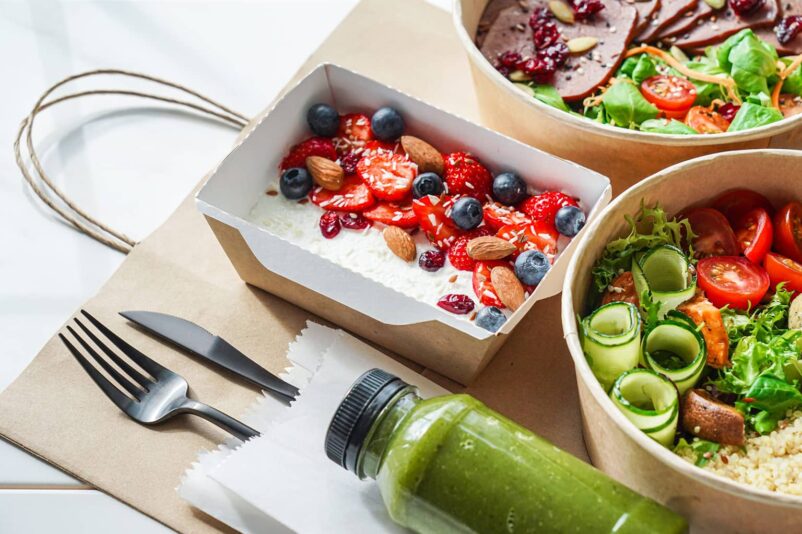Meal planning is a crucial aspect of achieving and maintaining optimal fitness. Whether you’re an athlete, a fitness enthusiast, or someone simply striving for a healthier lifestyle, nourishing your body with the right foods is essential for success. In this blog, we will explore the purpose and value of meal planning for fitness, backed by insights from leading experts and research. Additionally, we’ll provide you with practical steps to create a personalized meal plan that aligns with your fitness goals. Along the way, we’ll also introduce some affiliate links to help you access useful tools and resources to make your meal planning journey easier.
Dr. Sarah Carter, a renowned sports nutritionist, emphasizes the significance of meal planning for athletes. According to Dr. Carter, “Having a well-thought-out meal plan can enhance athletic performance, promote recovery, and reduce the risk of injuries.”
A study published in the Journal of the International Society of Sports Nutrition revealed that athletes who followed a structured meal plan experienced improved body composition and better exercise performance compared to those with a more erratic eating pattern.
The Purpose of Meal Planning for Fitness

Meal planning serves several crucial purposes when it comes to optimizing fitness.
Proper Nutrient Intake
A well-structured meal plan ensures that you consume the right balance of macronutrients (carbohydrates, proteins, and fats) and micronutrients (vitamins and minerals). This optimization is essential for supporting muscle growth, recovery, and overall performance.
Energy and Performance
By fueling your body with the right foods at the right times, you’ll experience sustained energy levels throughout your workouts and daily activities, leading to improved performance and productivity.
Weight Management
Meal planning can be a valuable tool for those seeking to lose or maintain weight. It helps in controlling portion sizes and managing calorie intake, making it easier to achieve fitness goals.
The Value of Meal Planning for Optimal Fitness

The value of meal planning for optimal fitness cannot be overstated. Here are some key benefits.
Consistency
By having a plan in place, you’ll be more likely to stick to your dietary goals and avoid impulsive, unhealthy choices. Consistency is crucial for making long-term progress in fitness.
Time and Money Saving
Preparing meals in advance saves time and money by reducing the need for frequent restaurant visits or unhealthy fast-food options. Moreover, buying ingredients in bulk can be cost-effective.
Customization
Meal planning allows you to tailor your diet to your specific fitness goals, dietary preferences, and restrictions. This level of personalization ensures you get the most out of your nutrition plan.
Practical Steps to Create Your Meal Plan

Now that we understand the purpose and value of meal planning for optimal fitness, let’s delve deeper into each step and explore some opportunities for specific products that can support your journey
Step 1: Set Clear Goals
To start your meal planning journey, it’s essential to have clear and achievable fitness goals in mind. Whether you aim to build lean muscle, shed unwanted pounds, or enhance your athletic performance, defining your objectives will provide direction to your meal plan.
For those looking to streamline their goal-setting process, the “GoalGetter” planner can be a helpful tool. This planner allows you to set and track your fitness objectives, record your progress, and stay motivated throughout your journey. Use our affiliate link for an exclusive 15% discount on the GoalGetter planner.
Step 2: Calculate Caloric Needs
Determining your daily caloric needs is crucial for creating a meal plan that aligns with your fitness goals. You can use online calculators or consult a nutritionist to obtain accurate estimates based on factors like your activity level, age, weight, height, and metabolism.
The “CalorieCounter” app simplifies calorie tracking and helps you monitor your intake effortlessly. With a database of thousands of foods and an intuitive interface, you can easily stay within your caloric targets. Use our affiliate link to download the CalorieCounter app and get a free 7-day premium trial.
Step 3: Design a Balanced Plate
A balanced plate should consist of nutrient-dense foods that provide essential macronutrients and micronutrients. Aim to incorporate a variety of colors and flavors into your meals, and follow the one-third rule: one-third of your plate should contain lean proteins, one-third complex carbohydrates, and one-third vegetables and healthy fats.
“NutriBalance,” a comprehensive meal planning guide, offers a range of recipes and meal ideas designed to meet your nutritional needs. With a variety of options for different dietary preferences, NutriBalance makes it easy to design a balanced plate. Access NutriBalance using our affiliate link and receive a special 10% discount on the guide.
Step 4: Plan Ahead
Proper meal planning involves preparing in advance to ensure that you have healthy options readily available throughout the week. Take time each week to create a meal plan, write down recipes, make a shopping list, and prep ingredients to save time during busy days.
The “PrepMeals” meal prep containers are perfect for storing and transporting your prepped meals conveniently. These containers are BPA-free, durable, and microwave-safe, making meal prep a breeze. Order PrepMeals using our affiliate link and receive a set of reusable silicone food storage bags as a complimentary gift.
Step 5: Incorporate Nutrient Timing
Timing your meals around your workout schedule can enhance your fitness gains. Aim to consume a balanced meal with adequate protein and carbohydrates before and after exercise to optimize recovery and support muscle synthesis.
“WorkoutFuel” offers a range of pre-workout and post-workout supplements that can complement your meal plan. Their products are formulated to boost energy, support recovery, and improve performance. Try WorkoutFuel using our affiliate link and get a free shaker bottle with your first purchase.
Step 6: Stay Hydrated
Hydration is crucial for maintaining optimal fitness and overall well-being. Remember to drink enough water throughout the day, especially during workouts, to prevent dehydration.
“HydraMax” is a hydration tracking bottle that helps you monitor your water intake. With time markers and motivational quotes, HydraMax makes staying hydrated fun and easy. Order HydraMax using our affiliate link and receive a 20% discount on your purchase.
Step 7: Monitor and Adjust
Consistently monitor your progress and be open to making adjustments to your meal plan as needed. Each individual’s body responds differently to various nutrition approaches, so it’s essential to listen to your body and fine-tune your plan accordingly.
“FitTrack” offers a smart scale that measures various body metrics, including weight, body fat percentage, muscle mass, and more. With the FitTrack scale, you can track your progress accurately and make data-driven adjustments to your meal plan. Use our affiliate link for a 10% discount on the FitTrack smart scale.

Creating a personalized meal plan for optimal fitness is a journey that requires dedication and attention to detail. By setting clear goals, calculating caloric needs, designing balanced plates, planning ahead, incorporating nutrient timing, staying hydrated, and monitoring progress, you can make informed choices that align with your fitness objectives.
Remember that these steps and the product opportunities mentioned are meant to be supportive tools in your meal planning journey. Always prioritize whole, nutrient-dense foods and consult with a healthcare professional or nutritionist for personalized guidance.
Best of luck on your path to achieving optimal fitness through effective meal planning!







